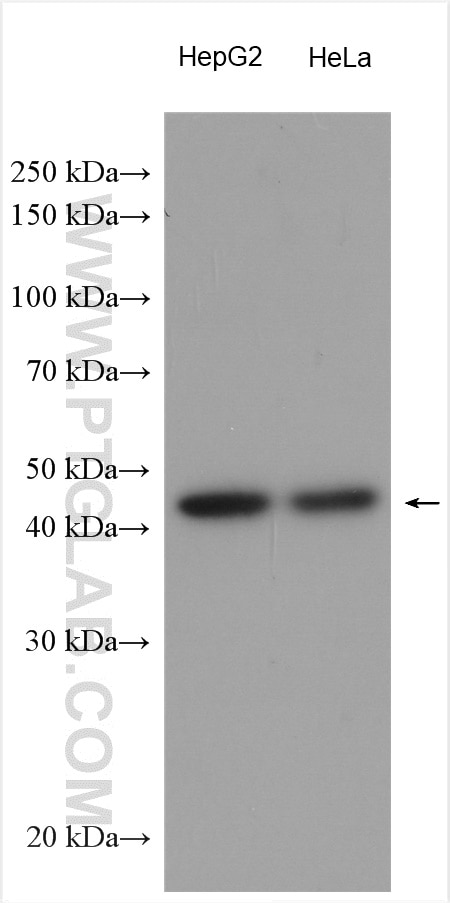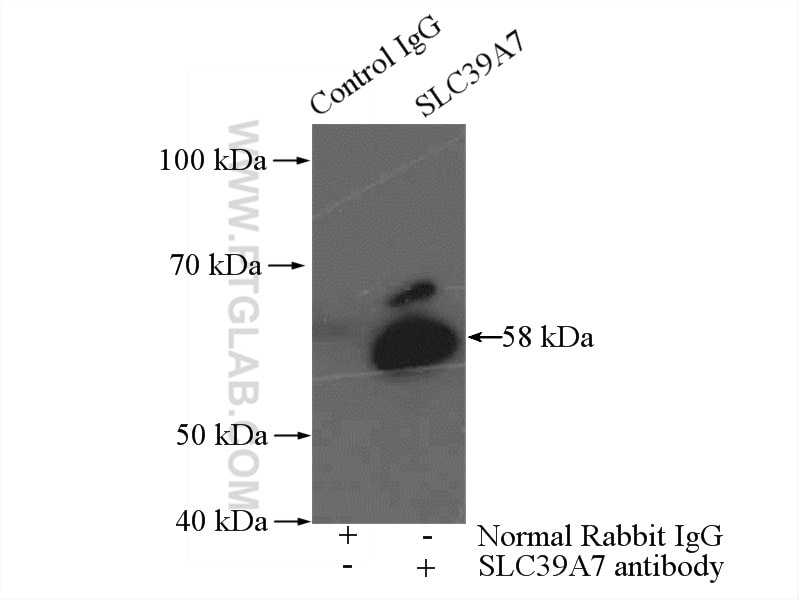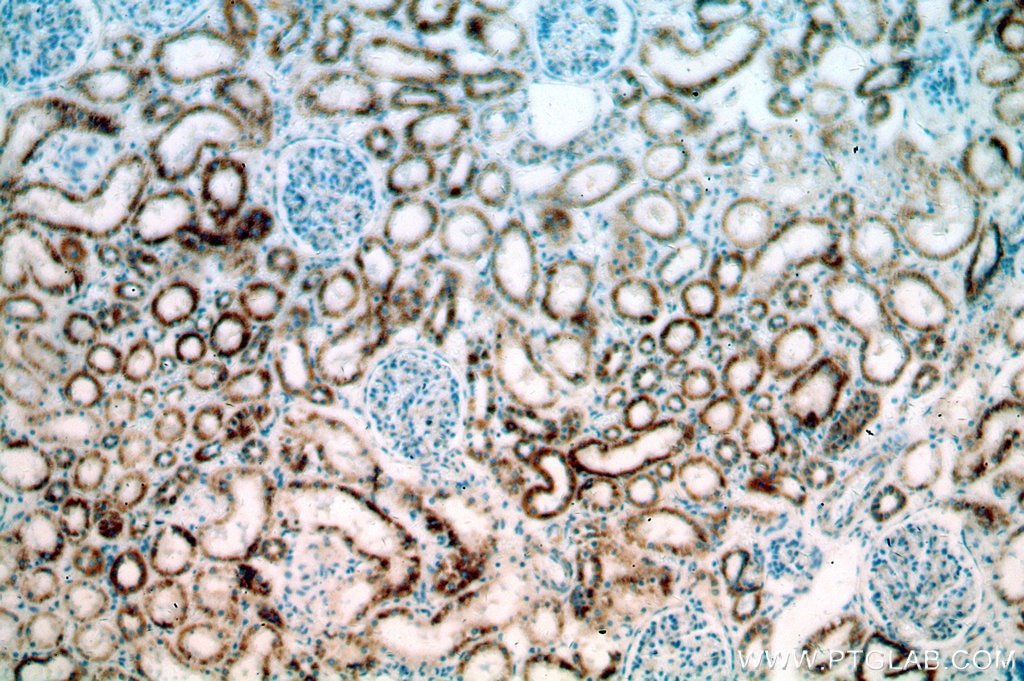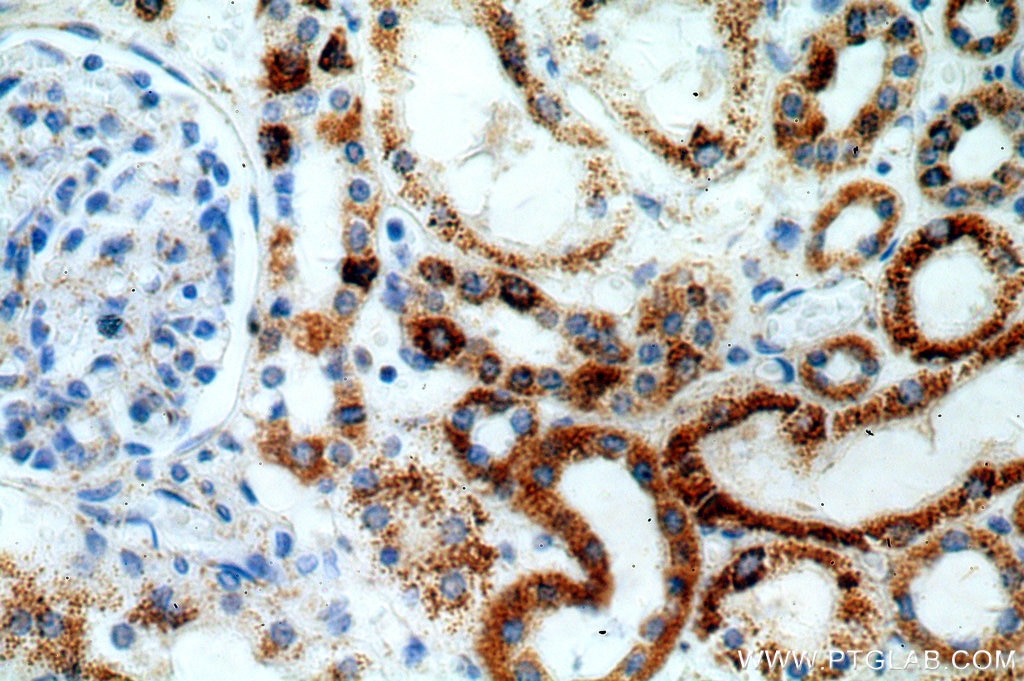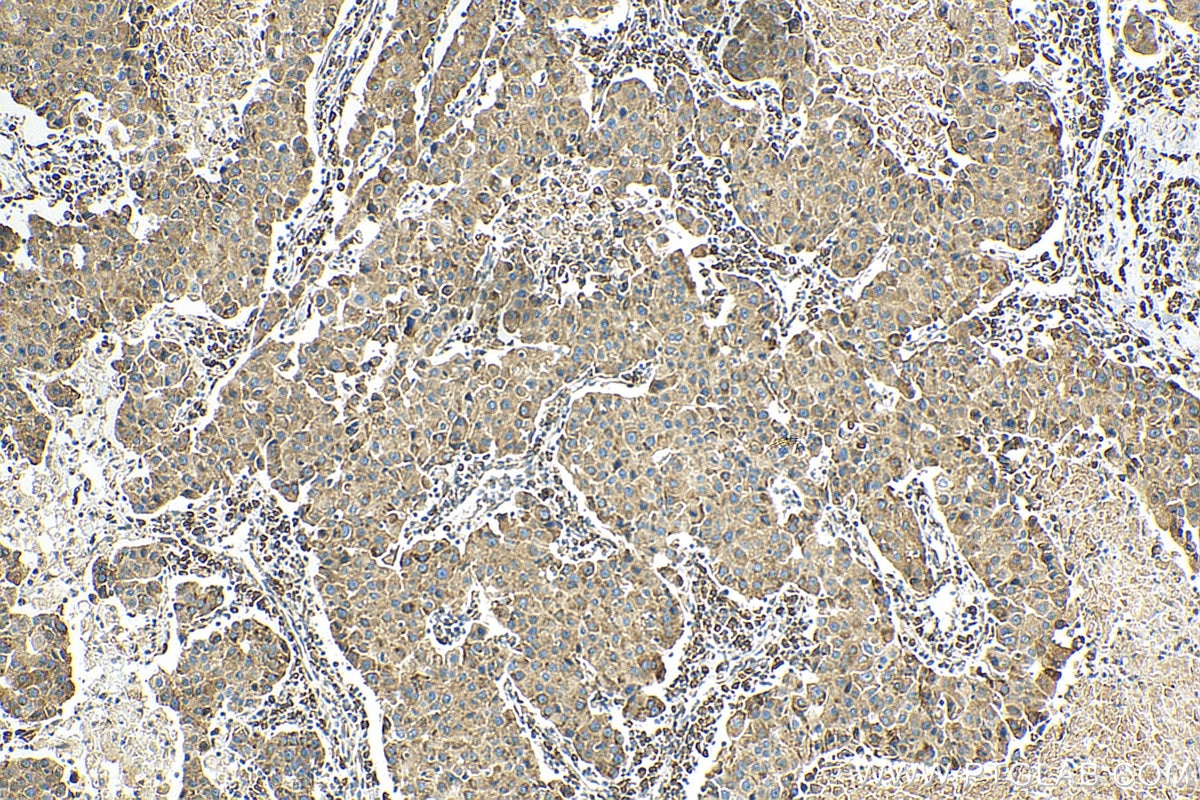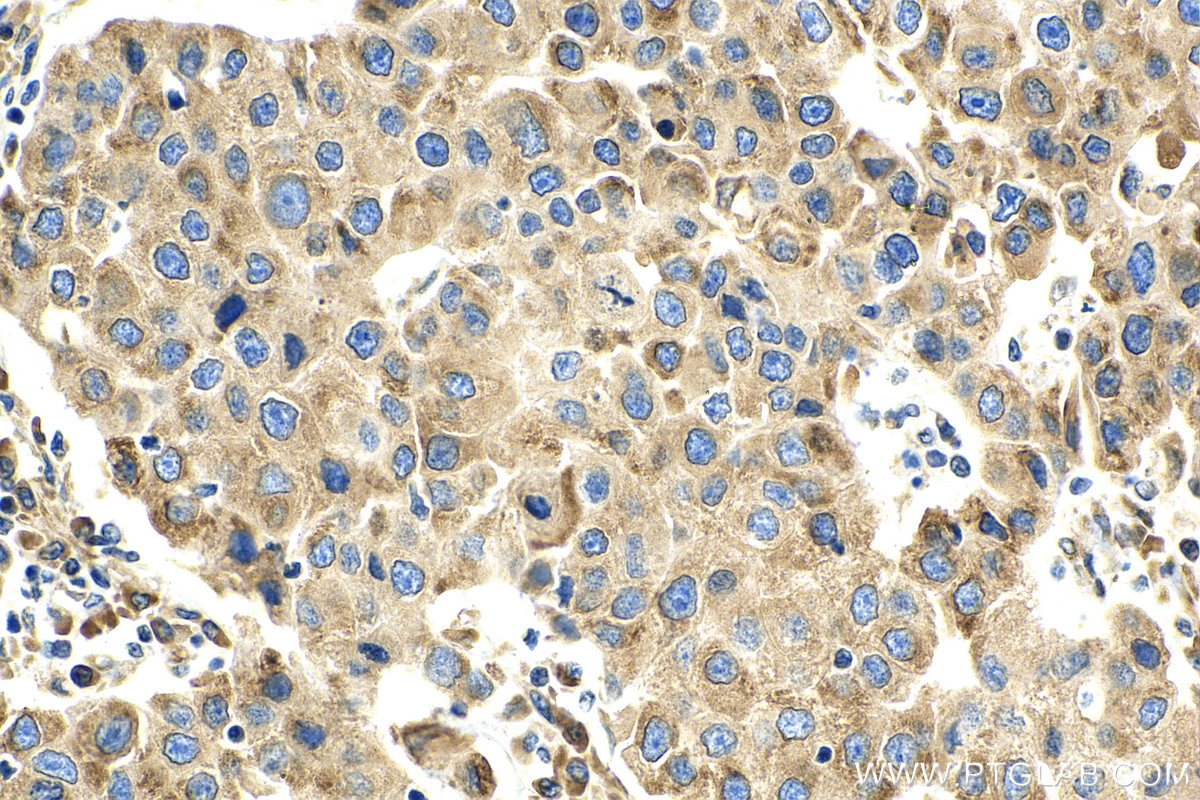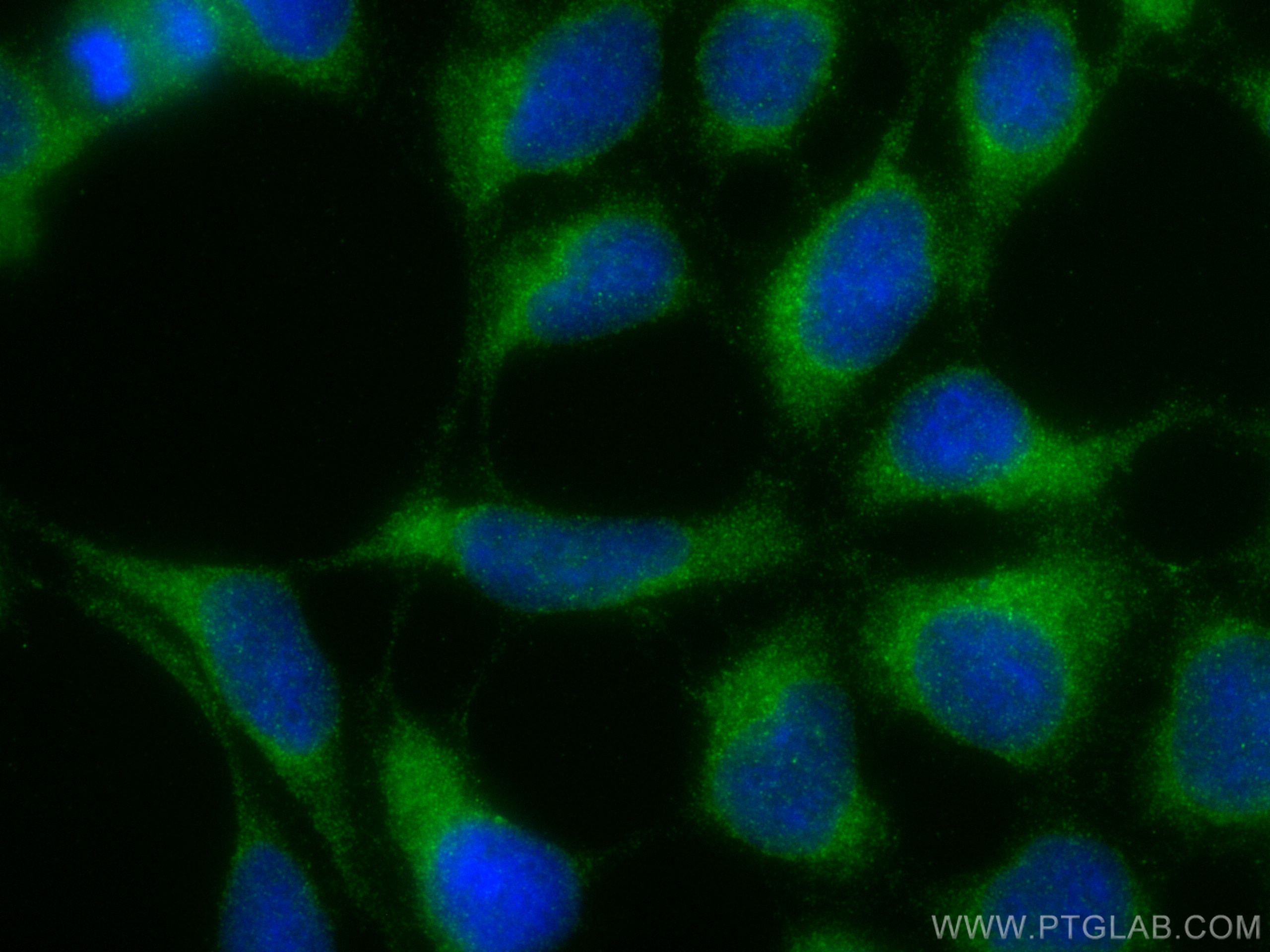- Phare
- Validé par KD/KO
Anticorps Polyclonal de lapin anti-ZIP7
ZIP7 Polyclonal Antibody for WB, IP, IF, IHC, ELISA
Hôte / Isotype
Lapin / IgG
Réactivité testée
Humain, rat, souris
Applications
WB, IHC, IF/ICC, IP, ELISA
Conjugaison
Non conjugué
N° de cat : 19429-1-AP
Synonymes
Galerie de données de validation
Applications testées
| Résultats positifs en WB | cellules HepG2, cellules HeLa |
| Résultats positifs en IP | tissu cérébral de souris |
| Résultats positifs en IHC | tissu rénal humain, tissu de cancer du sein humain il est suggéré de démasquer l'antigène avec un tampon de TE buffer pH 9.0; (*) À défaut, 'le démasquage de l'antigène peut être 'effectué avec un tampon citrate pH 6,0. |
| Résultats positifs en IF/ICC | cellules HEK-293, |
Dilution recommandée
| Application | Dilution |
|---|---|
| Western Blot (WB) | WB : 1:1000-1:8000 |
| Immunoprécipitation (IP) | IP : 0.5-4.0 ug for 1.0-3.0 mg of total protein lysate |
| Immunohistochimie (IHC) | IHC : 1:20-1:200 |
| Immunofluorescence (IF)/ICC | IF/ICC : 1:50-1:500 |
| It is recommended that this reagent should be titrated in each testing system to obtain optimal results. | |
| Sample-dependent, check data in validation data gallery | |
Applications publiées
| KD/KO | See 4 publications below |
| WB | See 15 publications below |
| IHC | See 3 publications below |
| IF | See 6 publications below |
Informations sur le produit
19429-1-AP cible ZIP7 dans les applications de WB, IHC, IF/ICC, IP, ELISA et montre une réactivité avec des échantillons Humain, rat, souris
| Réactivité | Humain, rat, souris |
| Réactivité citée | rat, Humain, souris |
| Hôte / Isotype | Lapin / IgG |
| Clonalité | Polyclonal |
| Type | Anticorps |
| Immunogène | ZIP7 Protéine recombinante Ag13762 |
| Nom complet | solute carrier family 39 (zinc transporter), member 7 |
| Masse moléculaire calculée | 469 aa, 50 kDa |
| Poids moléculaire observé | 45-50 kDa, 56 kDa |
| Numéro d’acquisition GenBank | BC000645 |
| Symbole du gène | ZIP7 |
| Identification du gène (NCBI) | 7922 |
| Conjugaison | Non conjugué |
| Forme | Liquide |
| Méthode de purification | Purification par affinité contre l'antigène |
| Tampon de stockage | PBS avec azoture de sodium à 0,02 % et glycérol à 50 % pH 7,3 |
| Conditions de stockage | Stocker à -20°C. Stable pendant un an après l'expédition. L'aliquotage n'est pas nécessaire pour le stockage à -20oC Les 20ul contiennent 0,1% de BSA. |
Informations générales
ZIP7 is a functional zinc transporter transporting zinc from the Golgi apparatus to the cytoplasm of the cell. ZIP7 is post-translationally regulated by CK2-mediated phosphorylation. This ZIP7 phosphorylation results in zinc release from intracellular stores, which activates multiple tyrosine kinases and regulate cell survival and proliferation. Dual bands of 50 kDa and 56 kDa detected by this antibody may represent the native and phosphorylated forms of ZIP7, respectively. (PMID: 28232492, 28205653)
Protocole
| Product Specific Protocols | |
|---|---|
| WB protocol for ZIP7 antibody 19429-1-AP | Download protocol |
| IHC protocol for ZIP7 antibody 19429-1-AP | Download protocol |
| IF protocol for ZIP7 antibody 19429-1-AP | Download protocol |
| IP protocol for ZIP7 antibody 19429-1-AP | Download protocol |
| Standard Protocols | |
|---|---|
| Click here to view our Standard Protocols |
Publications
| Species | Application | Title |
|---|---|---|
Chem Sci X-ray fluorescence imaging reveals subcellular biometal disturbances in a childhood neurodegenerative disorder. | ||
Cell Death Differ Systematic genetic mapping of necroptosis identifies SLC39A7 as modulator of death receptor trafficking. | ||
Acta Neuropathol Commun Deregulation of subcellular biometal homeostasis through loss of the metal transporter, Zip7, in a childhood neurodegenerative disorder.
| ||
Metallomics Deregulation of biometal homeostasis: the missing link for neuronal ceroid lipofuscinoses? | ||
